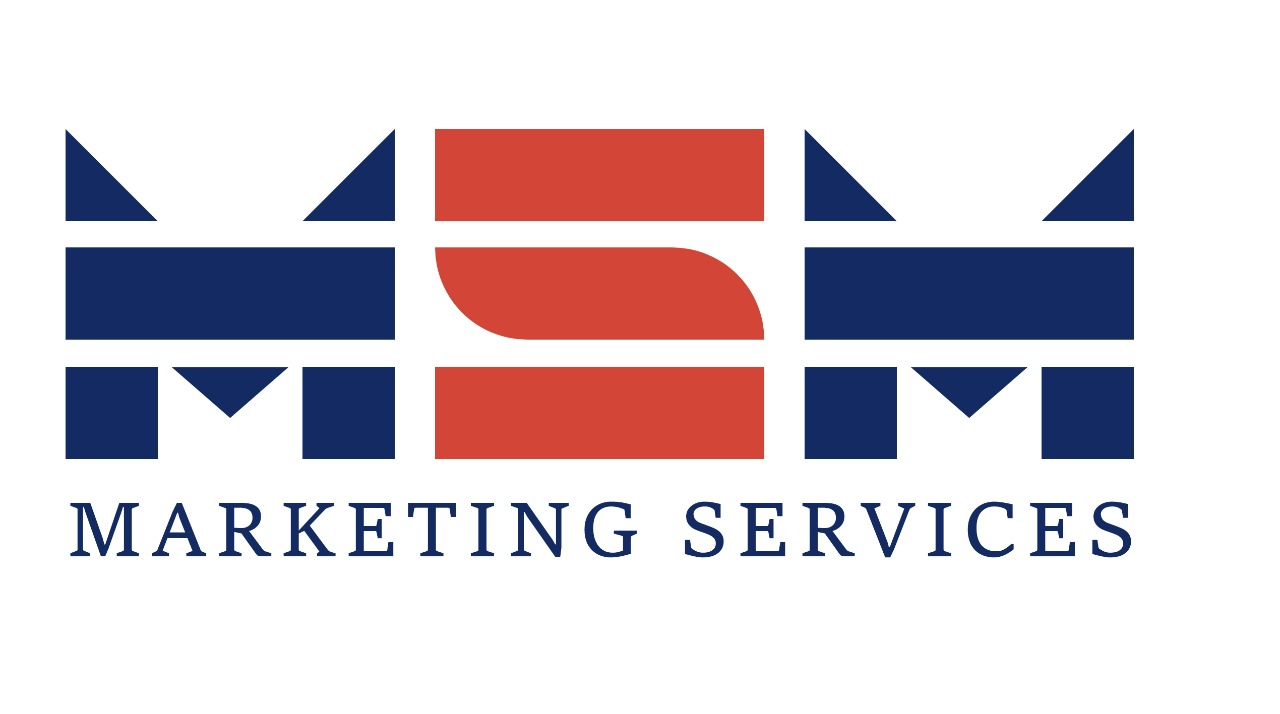In today’s digital era, content marketing has become an essential strategy for businesses across various industries, and healthcare is no exception. Healthcare content marketing services offer a unique opportunity to educate, engage, and build trust with patients and healthcare professionals.
In this blog, we will explore the key elements of a successful healthcare content marketing strategy, providing you with actionable insights to unlock the power of content marketing for your healthcare organization. Let’s dive in!
I. Understanding the Importance of Healthcare Content Marketing
The evolving landscape of healthcare marketing
In recent years, the healthcare industry has witnessed a significant shift in the way patients seek and consume information. With the widespread availability of online resources, patients now play an active role in managing their health. As a result, healthcare organizations must adapt their marketing strategies to meet the evolving needs and expectations of patients.
Why content marketing is crucial for healthcare organizations
Content marketing is a powerful tool for healthcare organizations to establish their expertise, credibility, and thought leadership. By providing valuable and relevant information, healthcare organizations can engage and educate their target audience, building trust and fostering long-term relationships.
Content marketing also allows healthcare organizations to differentiate themselves in a competitive market and drive patient acquisition and retention.
The benefits of content marketing in the healthcare industry
Implementing a robust content marketing strategy offers several benefits for healthcare organizations. These include increased brand awareness, enhanced patient engagement and loyalty, improved search engine visibility, and the ability to position your organization as a trusted source of healthcare information.
Additionally, content marketing can drive website traffic, generate leads, and ultimately contribute to the growth and success of your healthcare organization.
II. Defining Your Target Audience
Identifying your target patient demographics
To create effective healthcare content, it’s crucial to have a deep understanding of your target patient demographics. Consider factors such as age, gender, location, medical conditions, and specific healthcare needs.
This knowledge will enable you to develop content that resonates with your target audience, addresses their concerns, and provides valuable solutions.
Understanding the needs and pain points of healthcare professionals
In addition to patients, healthcare professionals are an essential audience for healthcare content marketing. Identify the specific needs, challenges, and pain points of healthcare professionals in your target niche. This can include physicians, nurses, pharmacists, and other healthcare providers.
By addressing their informational needs and providing valuable insights, you can establish your organization as a trusted resource and strengthen professional relationships.
Tailoring content to meet the specific needs of your audience
Once you have a clear understanding of your target audience, tailor your content to address their specific needs and interests. Create content that educates, informs, and empowers patients and healthcare professionals alike.
Focus on providing accurate, evidence-based information, practical tips, and actionable advice. By delivering valuable content, you can establish your organization as a reliable source of information and build trust with your audience.
III. Creating a Content Strategy
Setting clear goals and objectives for your content marketing efforts
Before diving into content creation, it’s essential to establish clear goals and objectives for your content marketing strategy. Determine what you aim to achieve, whether it’s increasing website traffic, generating leads, improving patient engagement, or enhancing brand awareness.
Setting specific, measurable, attainable, relevant, and time-bound (SMART) goals will help guide your content creation efforts and ensure they align with your overall business objectives.
Conducting a thorough keyword research for healthcare topics
Keyword research is a critical component of healthcare content marketing. It involves identifying the keywords and phrases your target audience uses when searching for healthcare information online. Utilize keyword research tools to uncover relevant keywords with a balance of search volume and competition.
Incorporate these keywords strategically into your content to optimize it for search engines and improve its visibility to your target audience.
Developing a content calendar for consistency and organization
A content calendar is a valuable tool for planning and organizing your content creation efforts. It helps ensure a consistent flow of content and allows you to align your content with important dates, events, or seasonal trends. Determine the frequency of your content publication, whether it’s weekly, bi-weekly, or monthly, and map out topics and deadlines on your content calendar.
This will help you stay organized and maintain a steady stream of valuable content.
Incorporating different content formats (e.g., articles, videos, infographics)
Diversifying your content formats can make your healthcare content more engaging and appealing to different audience preferences. Consider incorporating various content formats such as articles, videos, infographics, podcasts, and interactive tools.
Different formats can convey information in different ways, catering to different learning styles and increasing overall engagement with your content.
Leveraging storytelling to engage and connect with your audience
Storytelling is a powerful technique to captivate your audience and create an emotional connection. Incorporate storytelling elements into your healthcare content to make it relatable and memorable. Share patient success stories, personal anecdotes, or experiences from healthcare professionals to humanize your content and evoke empathy and inspiration.
By weaving storytelling into your content, you can foster a deeper connection with your audience and leave a lasting impact.
IV. Crafting Engaging and Valuable Content
Writing compelling headlines and introductions
The headline and introduction of your content are crucial for grabbing the attention of your audience and enticing them to read further. Craft compelling headlines that are clear, and concise, and highlight the value proposition of your content. Follow it up with an engaging introduction that sets the tone, establishes credibility, and hooks the reader.
A strong headline and introduction will compel your audience to continue reading and engaging with your content.
Providing accurate and up-to-date healthcare information
As a healthcare organization, it’s essential to provide accurate and up-to-date information in your content. Healthcare is a constantly evolving field, and new research, treatments, and guidelines emerge regularly.
Stay abreast of the latest developments and ensure that your content reflects the most current information available. Cite reputable sources and provide references to back up your claims, instilling confidence in your audience.
Incorporating visual elements to enhance engagement
Visual elements, such as images, charts, graphs, and infographics, can significantly enhance the engagement and comprehension of your healthcare content. Visuals break up text, make information easier to digest, and add visual appeal to your content. Use high-quality visuals that are relevant to the content and reinforce your key messages.
Additionally, optimize your visuals for web use to ensure fast loading times and a smooth user experience.
Optimizing content for search engines
To maximize the visibility of your healthcare content, it’s crucial to optimize it for search engines. Incorporate relevant keywords naturally throughout your content, including in headings, subheadings, and meta tags. Structure your content with proper formatting, such as using H1 and H2 tags, to improve readability and signal the importance of key sections to search engines.
Additionally, optimize page titles, meta descriptions, and URLs to improve search engine rankings and attract organic traffic.
Ensuring content is easy to read and accessible
Make sure your healthcare content is easily readable and accessible to your audience. Use clear and concise language, break up text into shorter paragraphs, and utilize bullet points and subheadings to improve readability. Additionally, optimize your content for mobile devices since a significant portion of online users access healthcare information through smartphones and tablets.
Ensure that your content loads quickly displays properly, and is easy to navigate on mobile devices.
V. Amplifying Your Content Reach
Leveraging social media platforms to promote your content
Social media platforms offer immense opportunities to amplify the reach of your healthcare content. Identify the social media channels that are most relevant to your target audience, such as Facebook, Twitter, LinkedIn, or Instagram.
Develop a social media strategy that includes sharing your content, engaging with your audience, and leveraging social media advertising to expand your reach.
Encourage social sharing of your content by incorporating social sharing buttons on your website and actively engaging with your audience through comments, likes, and shares.
Engaging with online communities and forums
Participating in online communities and forums relevant to your healthcare niche can help you reach a highly targeted audience and establish your expertise. Join healthcare-related forums, groups, and communities where your target audience actively seeks information and engages in meaningful conversations.
Share your valuable insights, answer questions, and provide helpful resources. This not only increases your visibility but also builds trust and positions you as a credible source of information.

Collaborating with influencers and thought leaders
Partnering with influencers and thought leaders in the healthcare industry can expand your content’s reach and enhance your brand’s credibility. Identify influencers and thought leaders whose expertise aligns with your target audience and collaborate with them on content creation or promotion.
This can include guest blogging, co-creating videos or webinars, or featuring them as guest speakers or contributors. Their endorsement and expertise can help amplify your content and reach new audiences.
Harnessing the power of email marketing for healthcare content
Email marketing remains a highly effective strategy for nurturing relationships with your audience and driving engagement with your healthcare content. Build an email list by offering valuable resources or incentives, such as e-books, guides, or newsletters.
Segment your email list based on specific interests or demographics to deliver personalized and relevant content to each subscriber. Utilize email automation to send regular updates, share new content, and promote relevant offers or events.
Utilizing paid advertising strategies to expand your reach
Paid advertising can complement your organic efforts and help you reach a wider audience. Consider investing in paid search advertising (e.g., Google Ads) to appear prominently in search engine results for relevant keywords.
dditionally, social media advertising platforms, such as Facebook Ads or LinkedIn Ads, allow you to target specific demographics and interests, maximizing the reach of your healthcare content.
Set clear objectives, define your target audience, and monitor and optimize your paid advertising campaigns to ensure optimal results.
VI. Measuring and Analyzing Your Content Performance
Defining relevant metrics and key performance indicators (KPIs)
To assess the effectiveness of your healthcare content marketing efforts, it’s important to define relevant metrics and key performance indicators (KPIs). These can include website traffic, engagement metrics (e.g., time on page, bounce rate), social media metrics (e.g., likes, shares, comments), lead generation, conversions, or ROI.
Align your chosen metrics with your content marketing goals and track them consistently to measure the success of your content initiatives.
Utilizing analytics tools to track content engagement and conversions
Analytics tools provide valuable insights into how your healthcare content is performing. Utilize tools like Google Analytics to track key metrics, monitor user behavior, and gain insights into content engagement. Analyze data such as page views, click-through rates, conversion rates, and user demographics to understand which content resonates most with your audience and optimize future content based on those insights.
Conducting A/B testing for continuous optimization
A/B testing involves creating two variations of your content and testing them against each other to determine which performs better. It helps you optimize your content by identifying what elements drive higher engagement or conversions. Test variables such as headlines, calls-to-action, visuals, or content lengths.
By systematically experimenting and analyzing the results, you can refine your content marketing strategy and improve its effectiveness over time.
Using data insights to refine your content marketing strategy
Data insights derived from analytics tools, A/B testing, and performance metrics should guide your content marketing strategy refinements. Analyze the data to identify patterns, trends, and areas for improvement. Pay attention to content that performs exceptionally well and try to replicate its success in future content.
Use data to refine your target audience personas, content topics, formats, and distribution channels. By continuously iterating and optimizing your content marketing strategy based on data insights, you can enhance the effectiveness of your healthcare content and achieve better results.
VII. Compliance and Ethical Considerations
Ensuring compliance with healthcare regulations and privacy laws
As a healthcare organization, it’s vital to ensure compliance with applicable healthcare regulations and privacy laws, such as HIPAA (Health Insurance Portability and Accountability Act) or GDPR (General Data Protection Regulation). Safeguard patient information, follow consent protocols, and adhere to industry-specific guidelines when creating and promoting healthcare content.
By prioritizing compliance, you protect patient privacy, maintain trust, and avoid legal implications.
Providing accurate and evidence-based information
Healthcare content must always prioritize accuracy and evidence-based information. Ensure that your content is based on reputable sources, such as peer-reviewed research studies, medical journals, or trusted healthcare organizations. Cite your sources and provide references to allow readers to verify the information independently.
By providing accurate and evidence-based content, you establish credibility, gain the trust of your audience, and position yourself as a reliable source of healthcare information.
Maintaining transparency and disclosing potential conflicts of interest
Transparency is crucial in healthcare content marketing. Disclose any potential conflicts of interest, such as financial relationships with pharmaceutical companies or medical device manufacturers. Clearly communicate any partnerships, sponsorships, or affiliations that may influence the content you create.
Maintaining transparency builds trust with your audience and ensures ethical practices in your healthcare content marketing efforts.
Conclusion
As healthcare continues to embrace the digital realm, content marketing has emerged as a powerful tool to connect with patients, healthcare professionals, and other stakeholders. By implementing an effective healthcare content marketing strategy, you can establish your organization as a trusted resource, increase brand awareness, and drive patient engagement.
Remember to regularly assess and refine your approach based on data insights to stay ahead in this competitive landscape. Embrace the power of content marketing and unlock the full potential of your healthcare organization.
At MSM Marketing Services, we specialize in healthcare content marketing and can help you create a successful strategy tailored to your unique needs. Contact us today to learn more about our services and take your healthcare content marketing to new heights.


I offer mutually beneficial cooperation https://ztd.bardou.online/adm
Cool website. There is a suggestion https://ztd.bardou.online/adm
Content for your website http://myngirls.online/
Web Development Wizards http://myngirls.online/
Can provide a link mass to your website http://myngirls.online/
Your site’s position in the search results http://myngirls.online/
Free analysis of your website http://myngirls.online/
SEO Optimizers Team http://myngirls.online/
I offer mutually beneficial cooperation http://myngirls.online/
Content for your website http://fertus.shop/info/
Web Development Wizards http://fertus.shop/info/
Can provide a link mass to your website http://fertus.shop/info/
Your site’s position in the search results http://fertus.shop/info/
Free analysis of your website http://fertus.shop/info/
I offer mutually beneficial cooperation http://fertus.shop/info/
Cool website. There is a suggestion http://fertus.shop/info/
I really liked your site. Do you mind http://fertus.shop/info/
Here’s what I can offer for the near future http://fertus.shop/info/
You will definitely like it http://fertus.shop/info/
The best prices from the best providers http://fertus.shop/info/
Additional earnings on your website http://fertus.shop/info/
Analytics of your website http://fertus.shop/info/
I would like to post an article http://fertus.shop/info/
How to contact the administrator on this issue http://fertus.shop/info/
Shall we exchange links? My website http://fertus.shop/info/
The offer is still valid. Details http://fertus.shop/info/
Content for your website http://fertus.shop/info/
Web Development Wizards http://fertus.shop/info/
Can provide a link mass to your website http://fertus.shop/info/
Can provide a link mass to your website http://fertus.shop/info/
Free analysis of your website http://fertus.shop/info/
“Thrilled to have found a blog that stands out for its commitment to truth and structure. Thank you for being a reliable source of information!”
I offer mutually beneficial cooperation http://fertus.shop/info/